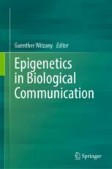Search
Search Results
-
Fanconi anemia DNA crosslink repair factors protect against LINE-1 retrotransposition during mouse development
Long interspersed nuclear element 1 (LINE-1) is the only autonomous retrotransposon in humans and new integrations are a major source of genetic...

-
LINE-1 Retrotransposition Assays in Embryonic Stem Cells
The ongoing mobilization of active non-long terminal repeat (LTR) retrotransposons continues to impact the genomes of most mammals, including humans...
-
Apricot kernels’ extract and amygdalin alter bleomycin-induced Ty1 retrotransposition, mitotic gene conversion in the trp-5 locus and reverse point mutations in ilv1-92 allele in Saccharomyces cerevisiae
The present study aims to analyze the effect of apricot kernels’ extract (AKE) and amygdalin (AMY) on bleomycin-induced genetic alternations. Five...

-
RNA m6A modification orchestrates a LINE-1–host interaction that facilitates retrotransposition and contributes to long gene vulnerability
The molecular basis underlying the interaction between retrotransposable elements (RTEs) and the human genome remains poorly understood. Here, we...

-
Potential Contribution of Retrotransposons to Learning and Memory
Increasing evidence indicates that insertion of transposable elements, particularly retrotransposons, may play a critical role in learning and...
-
Interfering with retrotransposition by two types of CRISPR effectors: Cas12a and Cas13a
CRISPRs are a promising tool being explored in combating exogenous retroviral pathogens and in disabling endogenous retroviruses for organ...

-
RetroSeeker reveals the characteristics, expression, and evolution of a large set of novel retrotransposons
Retrotransposons are highly prevalent in most animals and account for more than 35% of the human genome. However, the prevalence, biogenesis...

-
RNA m6A modification regulates L1 retrotransposons in human spermatogonial stem cell differentiation in vitro and in vivo
The maintenance of genome integrity in the germline is crucial for mammalian development. Long interspersed element type 1 (LINE-1, L1) is a mobile...

-
BRCA1 and S phase DNA repair pathways restrict LINE-1 retrotransposition in human cells
Long interspersed element-1 (LINE-1, or L1) is the only autonomous retrotransposon that is active in human cells. Different host factors have been...

-
Cell fitness screens reveal a conflict between LINE-1 retrotransposition and DNA replication
LINE-1 retrotransposon overexpression is a hallmark of human cancers. We identified a colorectal cancer wherein a fast-growing tumor subclone...

-
ZNF689 deficiency promotes intratumor heterogeneity and immunotherapy resistance in triple-negative breast cancer
Triple-negative breast cancer (TNBC) is an aggressive disease characterized by remarkable intratumor heterogeneity (ITH), which poses therapeutic...

-
The non-LTR retrotransposons of Entamoeba histolytica: genomic organization and biology
Genome sequence analysis of Entamoeba species revealed various classes of transposable elements. While E. histolytica and E. dispar are rich in...

-
Frequent retrotransposition of endogenous genes in ERCC2-deficient cells derived from a patient with xeroderma pigmentosum
BackgroundRetrotransposition of protein-coding genes is thought to occur due to the existence of numerous processed pseudogenes in both animals and...

-
KCNQ1OT1 promotes genome-wide transposon repression by guiding RNA–DNA triplexes and HP1 binding
Transposon (de)repression and heterochromatin reorganization are dynamically regulated during cell fate determination and are hallmarks of cellular...

-
Promoter evolution of mammalian gene duplicates
BackgroundGene duplication is thought to be a central process in evolution to gain new functions. The factors that dictate gene retention following...

-
Identification of LINE retrotransposons and long non-coding RNAs expressed in the octopus brain
BackgroundTransposable elements (TEs) widely contribute to the evolution of genomes allowing genomic innovations, generating germinal and somatic...

-
Nested retrotransposition in the East Asian mouse genome causes the classical nonagouti mutation
Black coat color (nonagouti) is a widespread classical mutation in laboratory mouse strains. The intronic insertion of endogenous retrovirus VL30 in...

-
Categorizing 161 plant (streptophyte) mitochondrial group II introns into 29 families of related paralogues finds only limited links between intron mobility and intron-borne maturases
Group II introns are common in the two endosymbiotic organelle genomes of the plant lineage. Chloroplasts harbor 22 positionally conserved group II...

-
De novo genome assembly and genome skims reveal LTRs dominate the genome of a limestone endemic Mountainsnail (Oreohelix idahoensis)
BackgroundCalcareous outcrops, rocky areas composed of calcium carbonate (CaCO 3 ), often host a diverse, specialized, and threatened biomineralizing...

-
Karyotype and LTR-RTs analysis provide insights into oak genomic evolution
BackgroundWhole-genome duplication and long terminal repeat retrotransposons (LTR-RTs) amplification in organisms are essential factors that affect...

